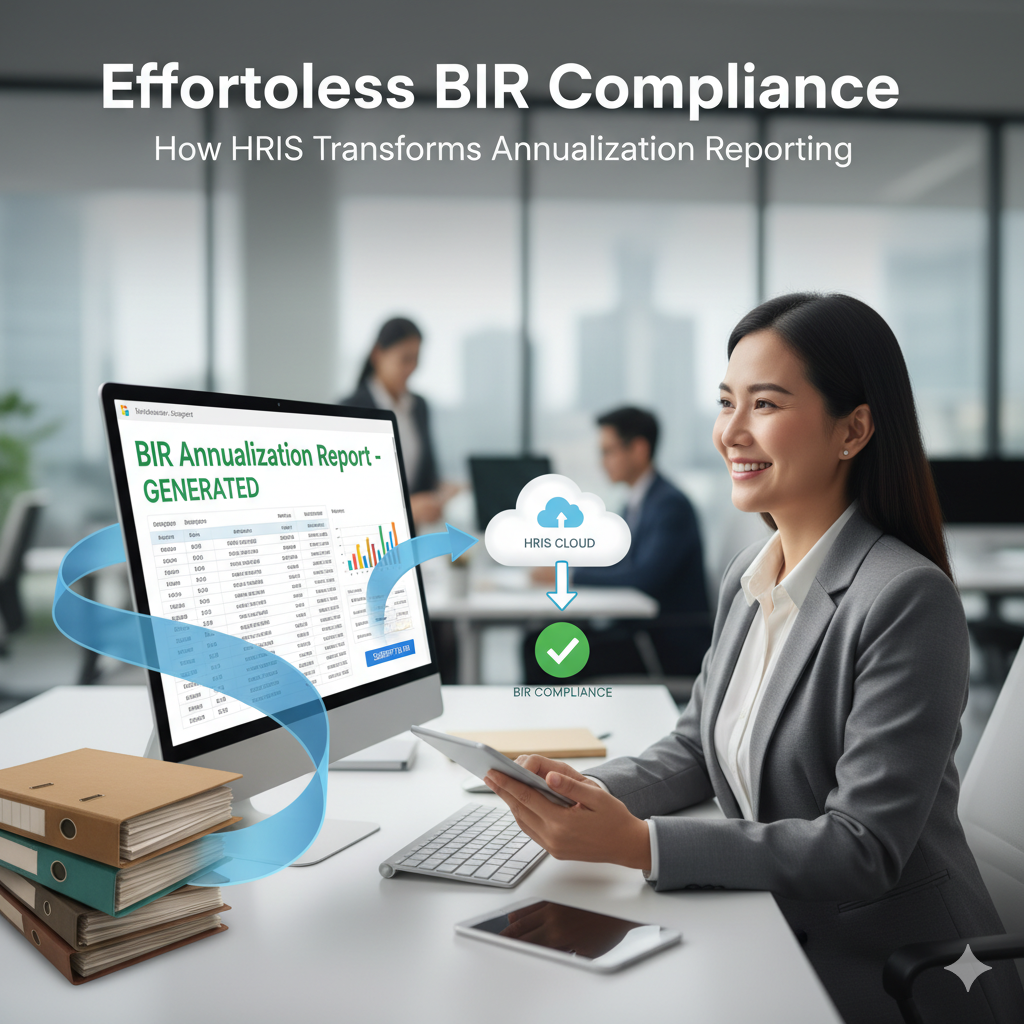Address
Kaypian, San Jose Del Monte City, Bulacan Philippines
Work Hours
Monday to Friday: 8AM - 6PM
Weekend: 10AM - 5PM
Address
Kaypian, San Jose Del Monte City, Bulacan Philippines
Work Hours
Monday to Friday: 8AM - 6PM
Weekend: 10AM - 5PM


Integrated HR. Accurate Payroll.


Integrated HR. Accurate Payroll.

Annualization and BIR compliance are among the most time-consuming and error-prone tasks for HR and payroll teams in the Philippines. Every year, HR professionals face the challenge of reconciling employee income, taxes withheld, and government report submissions — all while racing against strict BIR deadlines.
Enter the Human Resource Information System (HRIS) — a powerful digital solution designed to automate annualization reporting and ensure effortless compliance with BIR requirements.
In this blog, we’ll explore how HRIS simplifies BIR annualization, eliminates manual work, and helps businesses stay compliant — stress-free.
Annualization is the process of computing the total taxable income and corresponding withholding tax of employees for the entire year. It ensures that the correct tax amount has been deducted before filing the BIR Form 2316 and other year-end reports.
Without automation, HR teams often struggle with:
An HRIS addresses these pain points by automatically calculating, generating, and consolidating data for BIR annualization reports.
These can be exported in BIR-compliant formats, reducing time spent on manual encoding.
✅ 100% Accuracy – Minimize human error with automated computations.
✅ Time Savings – Generate reports in minutes instead of hours or days.
✅ Stress-Free Compliance – Stay up-to-date with ever-changing BIR rules.
✅ Data Security – Protect sensitive payroll data through secure cloud storage.
✅ Paperless Workflow – Digitize your HR and payroll operations for efficiency and sustainability.
When selecting an HRIS for your organization, look for these key features:
A reliable HRIS doesn’t just automate — it empowers HR teams to focus on strategic growth instead of paperwork.
BIR annualization and compliance no longer have to be a source of stress for HR teams. With the right HRIS, businesses can achieve effortless automation, accuracy, and compliance, ensuring smooth year-end reporting and peace of mind.
If your organization still handles annualization manually, now’s the perfect time to upgrade to an HRIS that streamlines every aspect of BIR reporting.